A selfie in front of the Eiffel Tower. Your friend holding up the leaning tower of Pisa. Grandma grinning in the Dead Sea. Our collective view of landscapes is crowded with the people we know, posing for posterity. “I was there! Here’s the proof!” Kind of funny, when you think about it. Artists Ambre Kelly and Andrew Gori’s new body of work, “Sightseers”, is comprised of large-scale photographs of those very personal poses from all over the world, recontextualized.
Brooklyn-based power duo Kelly and Gori share two very different practices. Ambre is a multi-disciplinary artist who works mainly in painting, drawing, and installation, while Andrew is a filmmaker. As a pair, they are well-known in art circles for their curator-driven SPRING/BREAK Art Show, which will come into its sixth iteration this year during Armory Week. (Last year the couple married at the fair.) For their debut exhibition as a duo at Equity Gallery, the couple exhibit photographs that have been collected over the course of five years. Curator Arielle de Saint Phalle explains, “Gori and Kelly expose the raw, fragile, often humorous and performative ways in which individuals choose to be remembered.” The effect is introspective, aesthetically awakening, and contemporaneously relevant.
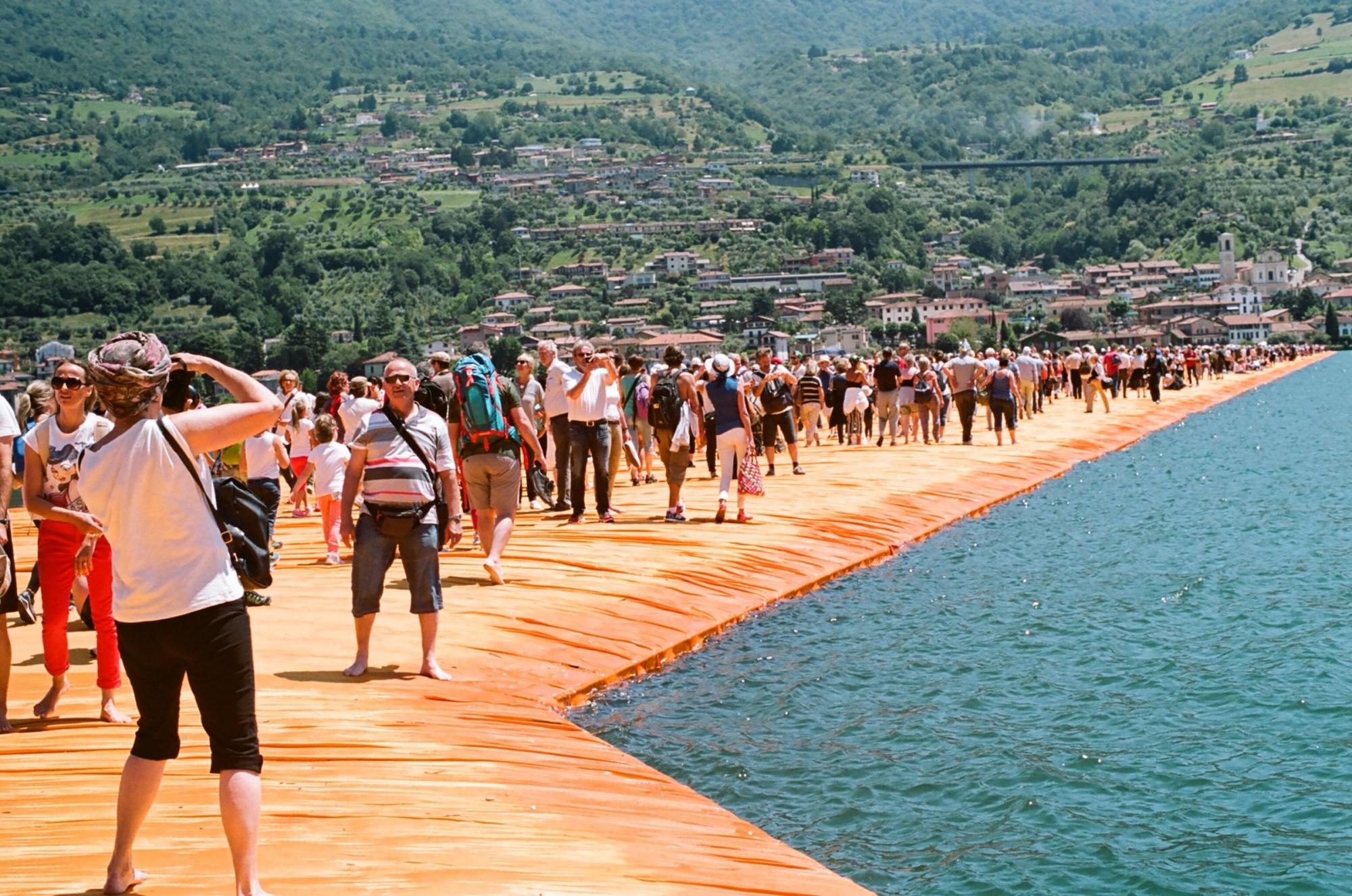
Do you consider self-documentation political in any way?
There is an underlying political element in self-documentation whereby yesteryear’s more underrepresented groups are now able to share their personal experiences widely. Often history’s monuments inadvertently celebrate governmental oppressions so to have everyone documenting themselves freely in front of monuments that often are not for and do not speak for them becomes an act of dissent. But where does this impulse to self-document come from and where does the product of this impulse end up?
Perhaps this is a more timely political factor: the fact that one’s voluntary self-documentation as an act of hypothetical liberation is used by governments without permission. Where photographers like Robert Frank or Danny Lyons or Nan Goldin showed a poetry in the everyday person, this language of simple visual lyricism is encroached on by a nagging reminder now: surveillance monitors the ‘everyday’ for power structures akin to past oppressors. And these recordings appear very much not for the purposes of poetry. Despite technological innovation, then, how far exactly have we come?
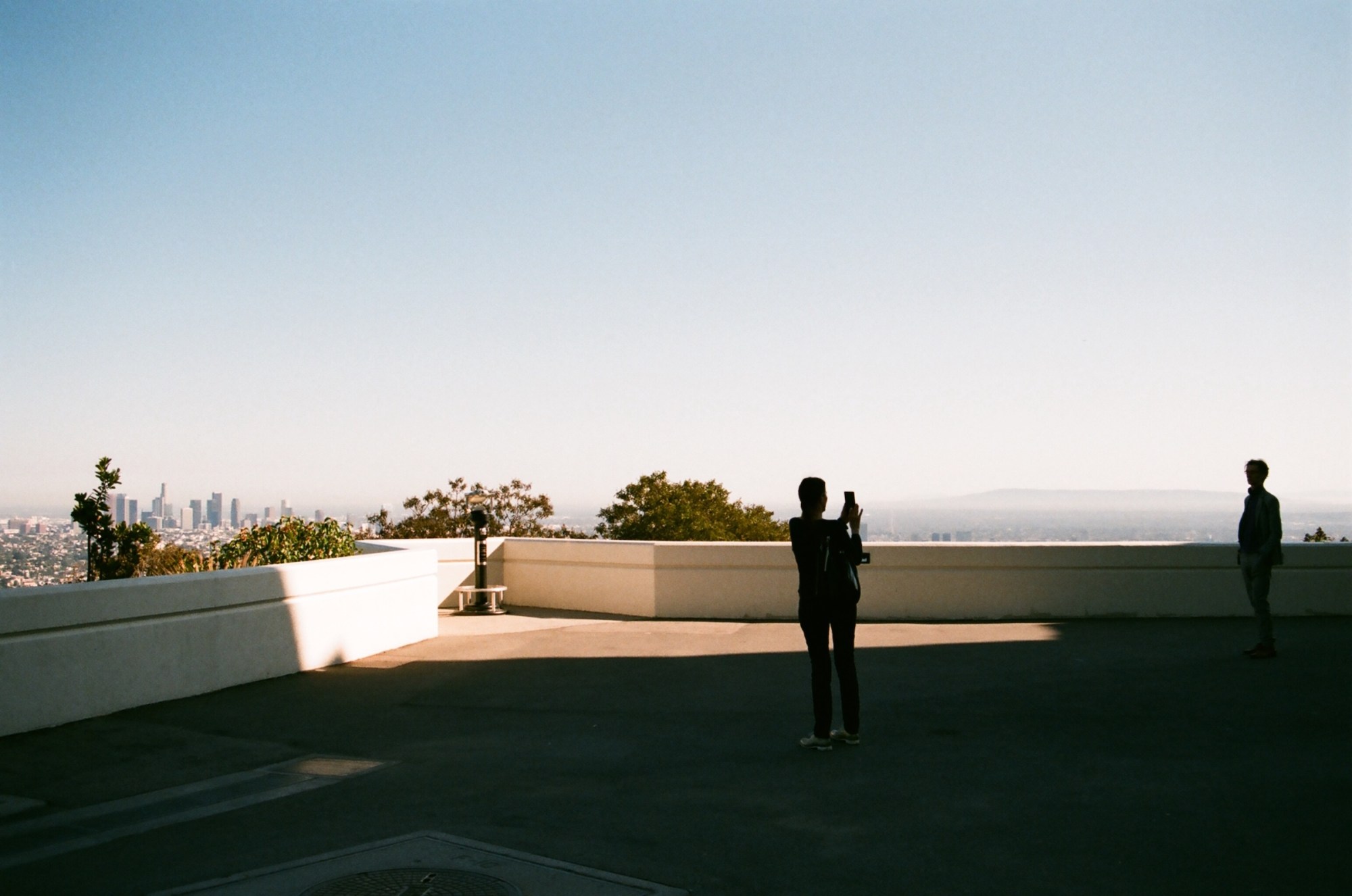
Many of the photographs feature families and couples in the process of creating memories. As a married couple, why did you choose to explore themes of familial memorialization?
Our approach is straightforward in that we are exploring the relationships between the subject, their performance and the location. It is less about the relationships between the subjects, but more about how they want to be remembered at this particular place and time in their history.
How do you think the performative aspect of self-documentation changes from place to place? Did you come across the typically Italian photo, for example? Or the typically Californian pose?
We have discovered that the personality of the destination has influence on the performance. Inclusive cultural events with a more diverse range of demographics held the greatest performances of joy, unencumbered by social media kneejerk or photo-editing on site. Christo and Jeanne Claude’s Floating Piers, for example, really felt this way. On the other side of the spectrum, more exclusive destinations and private events where the attendance is more controlled, tend to yield more performances of anxiety overcompensating with “trophy shots” and immediate uploads–a desire to interrupt the tangible experience for instant self preservation and gratification online.
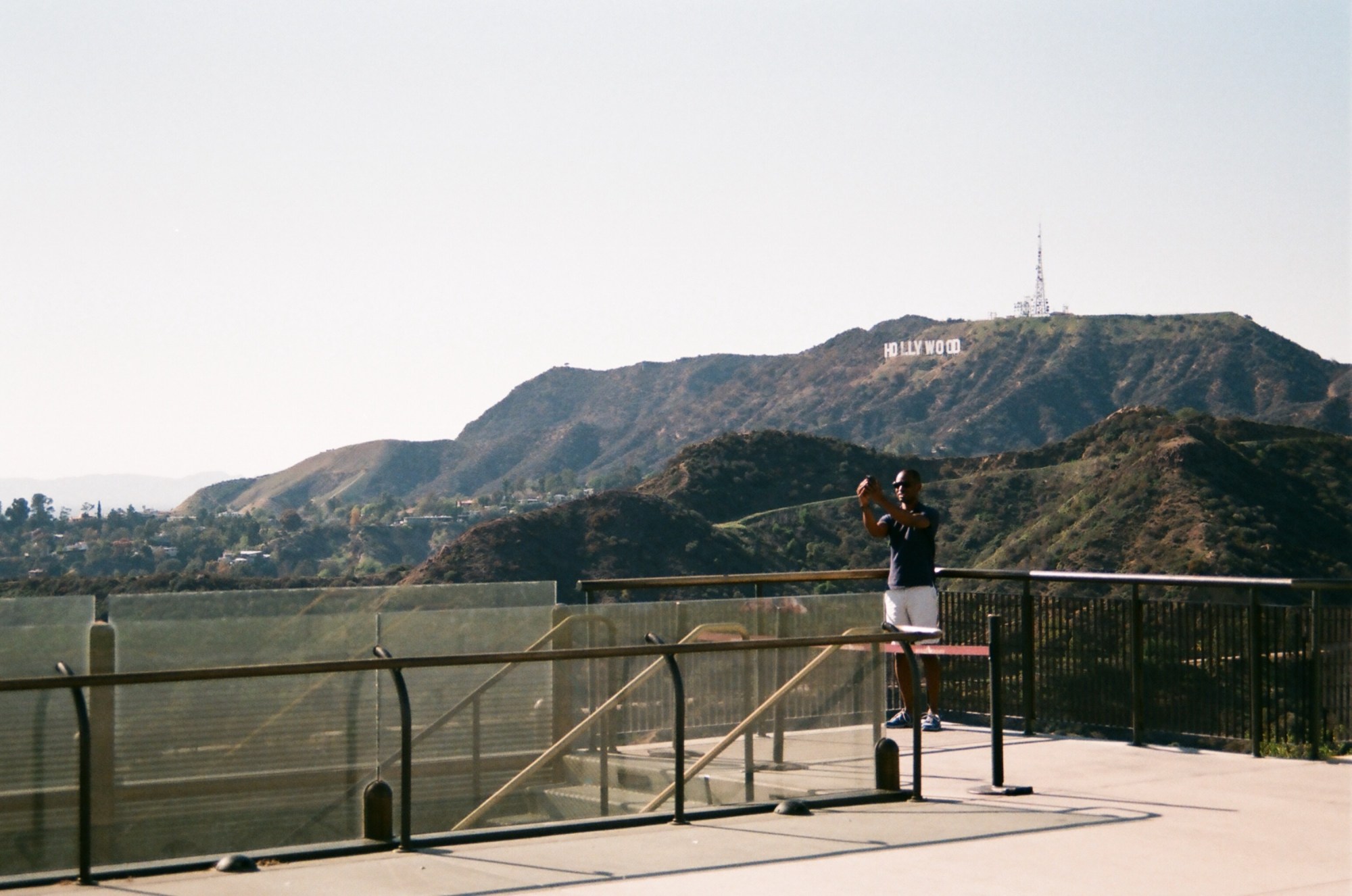
What was the most surprising juxtaposition of person and environment you encountered?
At White Point Garden along the Charleston Battery, we have a series cataloging parents propping their children on cannons used in the Civil War. The children tend to ride them like rocking horses, a pyramid of cannonballs by their sides, big smiles on their faces. It was surprising to see such unaware alliances to bloodshed, racial disparity and war.
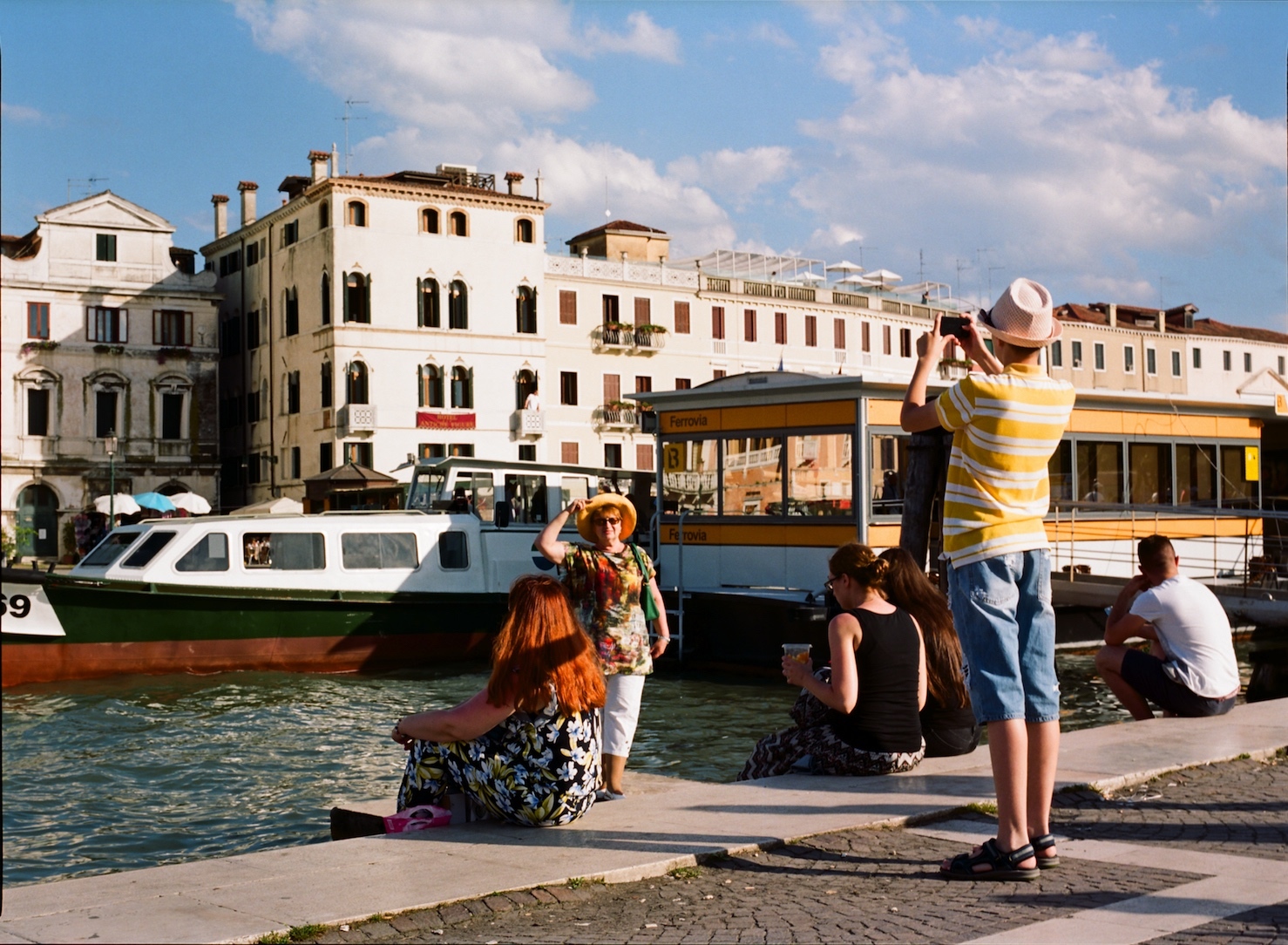
Why did you choose an analog camera and printing process to capture these very contemporary moments? Does this speak to your practice more generally or is this a purely aesthetic decision?
This was an aesthetic directive for this project alone. The self-documentation ritual of today, by virtue of being digital, is impulsive, camera-ready, and economical if not a little cheap. It is for these reasons more easily compulsive, unfussy, and habitual. The more involuntary an action becomes, the more people really show themselves through it. The decision to document this series with celluloid film and emulsion—something printed tangibly, becomes another layer to immortalize this fleeting act. The medium imposes higher stakes on us as photographers, more athletic demands compositionally, and a desire to formally chronicle through the filmic eyes of the 20th Century, what became of its successor, the digital 21st.
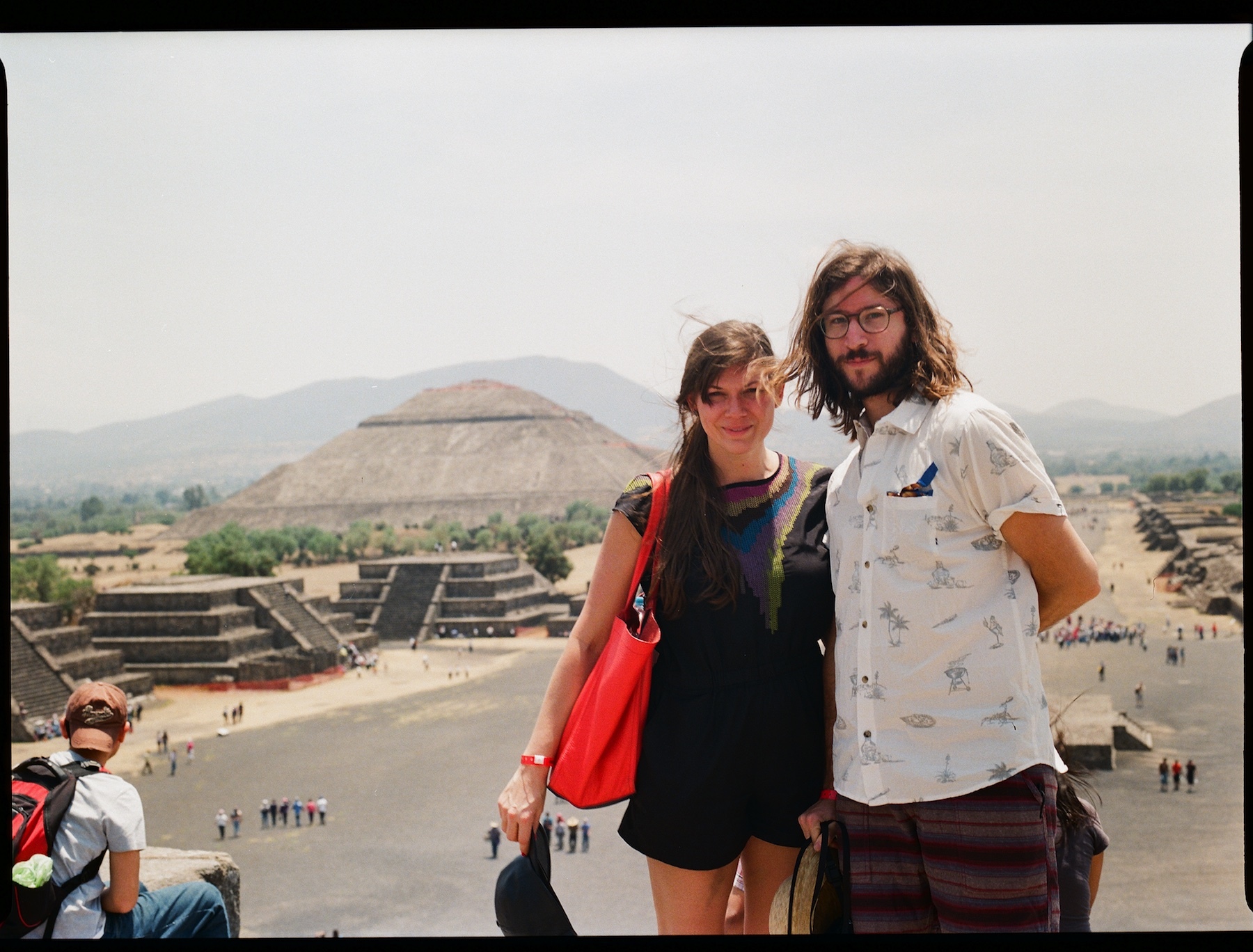
Would we ever catch you two taking selfies? If so, where have been some of your favorite spots?
Our instinct is usually to share the performance by having someone else take a picture of us. Though we believe there’s a selfie out there of us on a miniature golf course. Ambre the game’s victor.
Sightseers is on view at Equity Gallery in New York through October 29th.
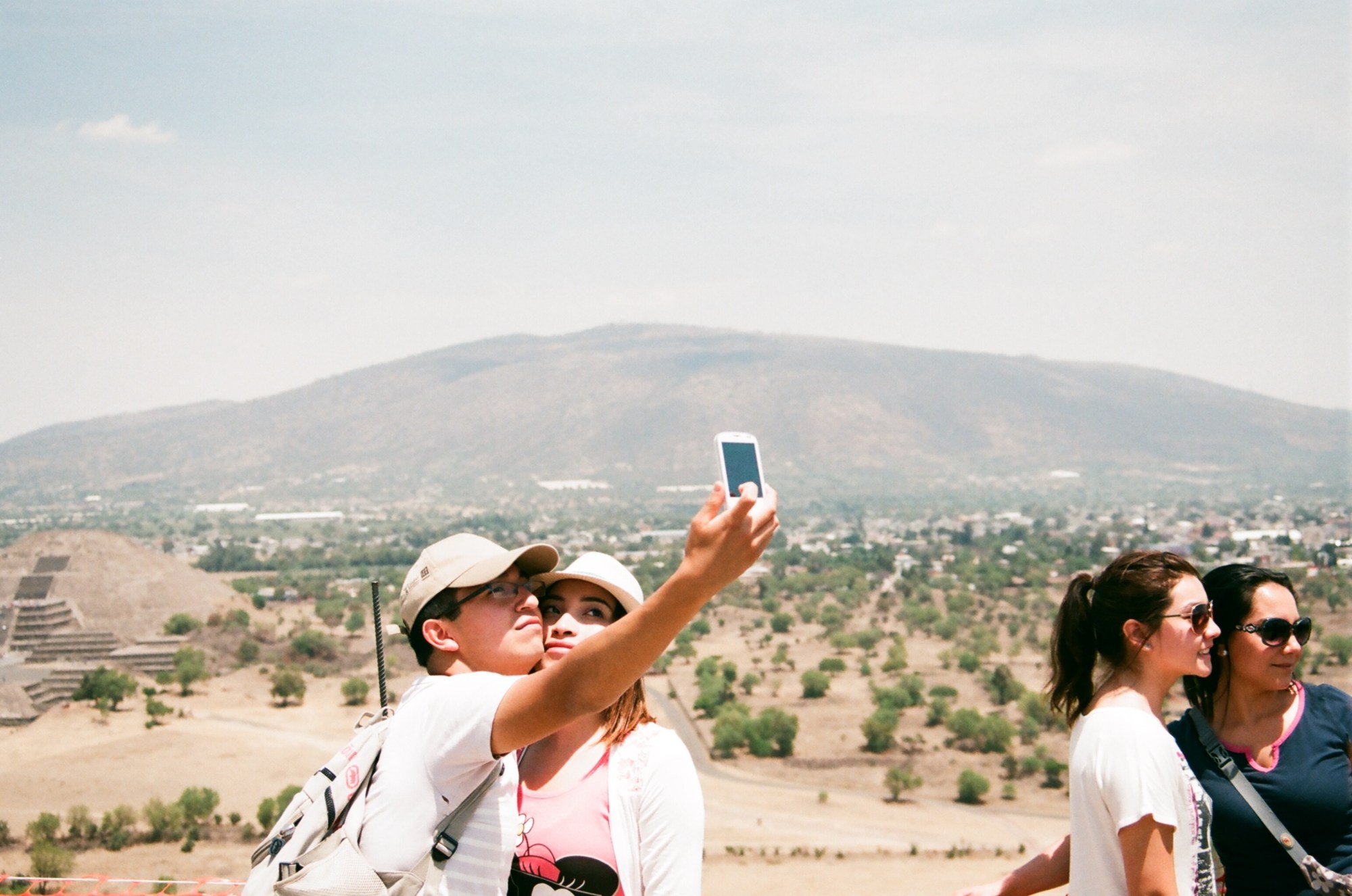
Credits
Text Michael Valinsky
All photography courtesy Andrew Gori and Ambre Kelly
